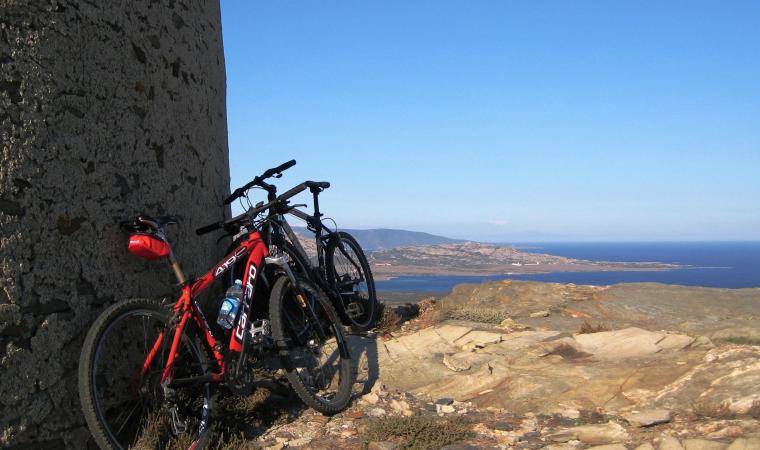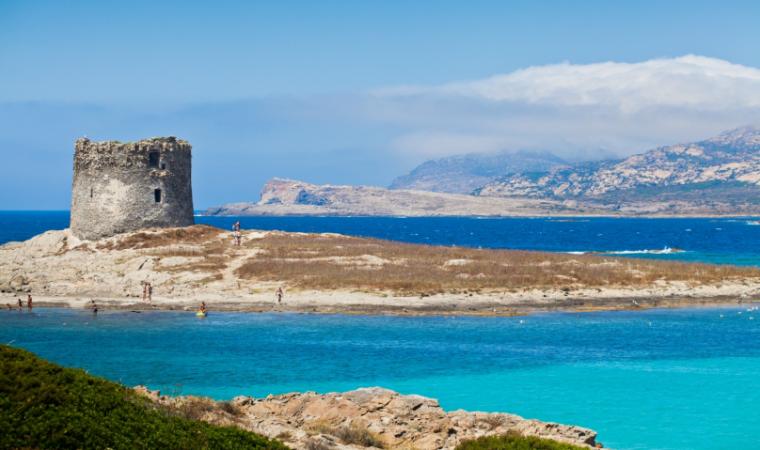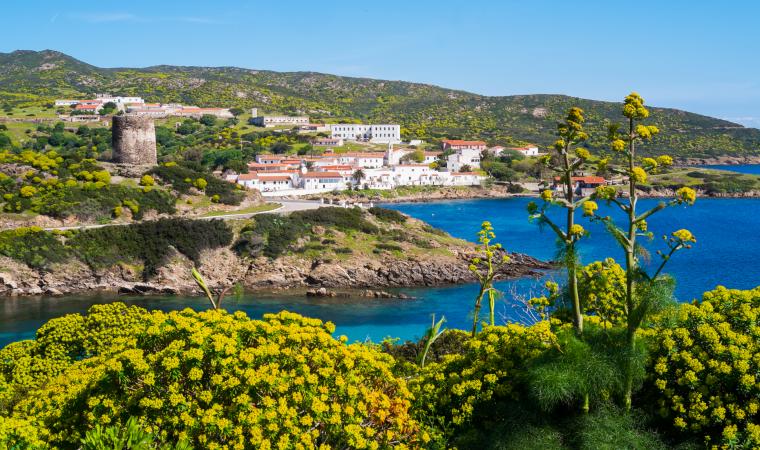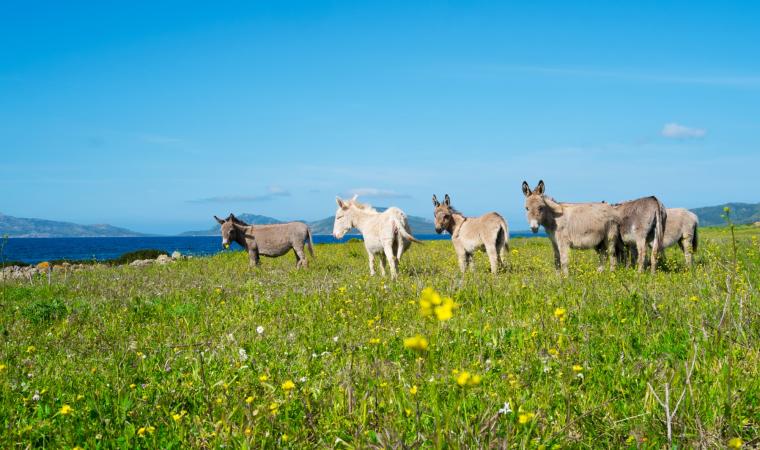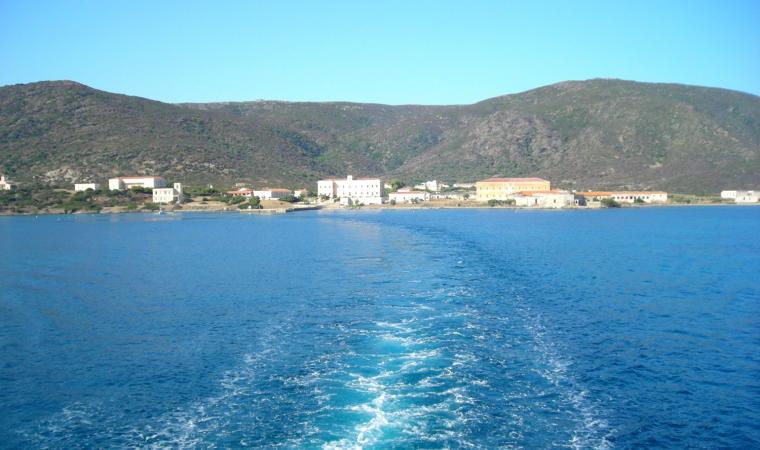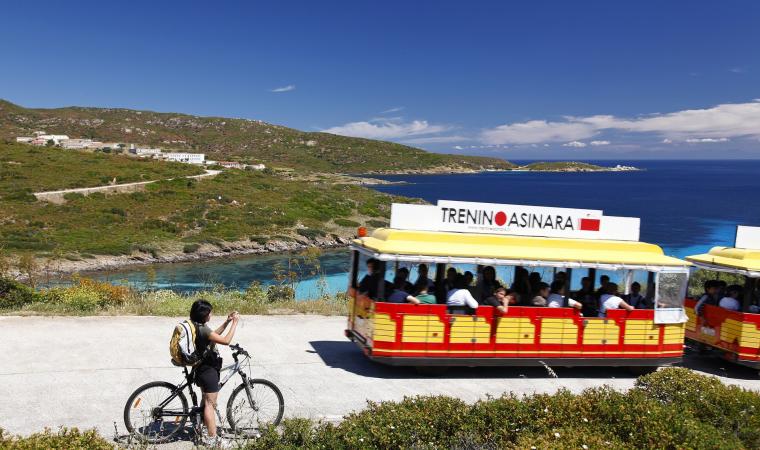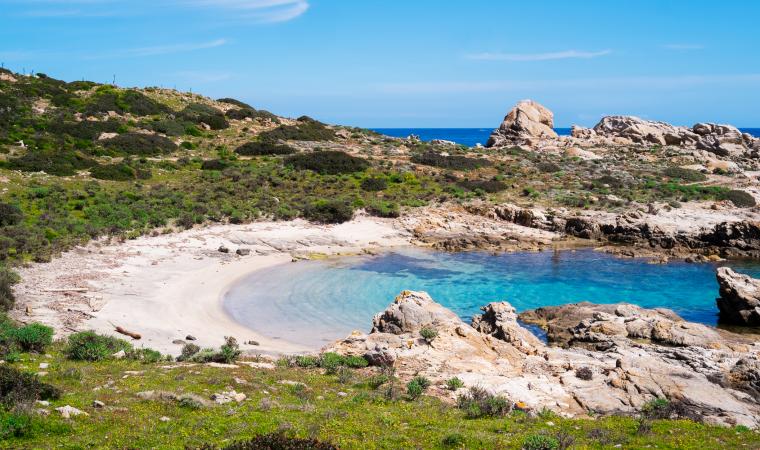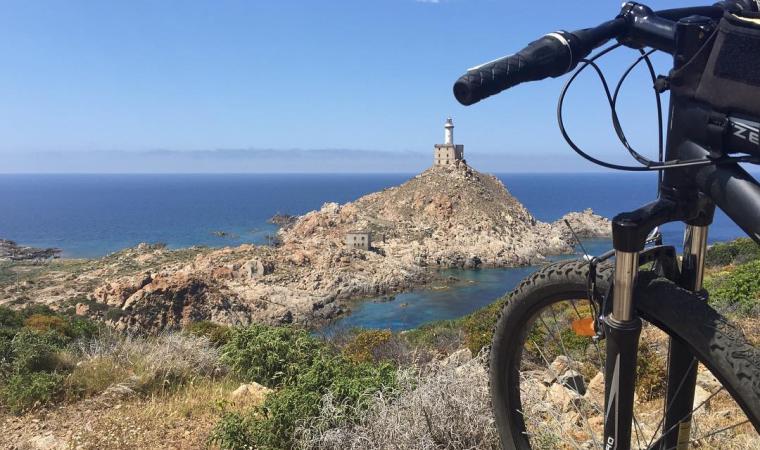To the north-west, this is where Sardinia ends. Beyond, there’s only open sea, often beaten by the northwesterly wind. Capo Falcone (or del Falcone) is the extreme northwestern point of the Island, a rugged promontory of black schists, with ravines in which the peregrine falcon nests and which is visited by the very rare Eleonora’s falcon. The unusual rock that composes the cape is known as ‘Stintino stone’, which covers and embellishes the walls of numerous ancient houses in the little Stintino village and the modern residential villas that ‘blend into’ the promontory. There is a border of green Mediterranean scrub around the dark rock, especially at low altitudes.
The name comes from the Falcone tower, built on the top of the cape in 1557, an integral part of a system of defence against Saracen incursions, which included five other nearby coastal towers. There is a trekking and mountain bike route that takes you to the terrace where the tower stands, the highest in the entire Nurra region: up there, at 200 metres above sea level, the view is breathtaking. You will notice an extraordinary contrast between the two sides: to the west, high and inaccessible cliffs overlooking the captivating ‘outer sea’ or mare di fuori (Sardinian Sea), which is dark blue and made rough by the winds; to the east the ‘inner sea’ is sheltered by the natural barrier and renamed ‘of seven colours’: transparent, sky blue, turquoise, light blue, emerald green, cobalt blue and deep blue. The water is almost always calm here and the water is very shallow for tens of metres. The coexistence of two extremely different landscapes within a few metres of each other is a unique feature of Stintino.
From the Falcone tower your view will reach all the way to Capo Caccia, passing through the splendid Valle della Luna, Coscia di Donna, Cala Vapore and Argentiera. The Isola Piana stands out in front of it and behind it is the Park of Asinara. At the foot of the rugged promontory, there is an islet on which another tower stands, a distinctive feature of the expanse of very fine, white sand of La Pelosa, one of the most beautiful beaches in Europe, a tropical paradise in the Mediterranean and a place not to be missed during your holiday. Alongside it, is the delightful ‘younger sister’, called La Pelosetta. To the east, in the distance you will see the expanses of round, white pebbles of Le Saline and Ezzi Mannu, passing through L'Ancora and the rocks of Punta Negra.
From Stintino, you will come to Capo Falcone, travelling about five kilometres along the road to La Pelosa. This masterpiece of nature has made the former fishing village a renowned tourist location since the 1970s. In the beginning, it was very similar to Cala d’Oliva on the island of Asinara, a village of white houses originating from the 45 Ligurian families who founded it in 1885, when the Kingdom of Italy established a leper hospital and penal colony on the island. The town stands on a strip of land between two inlets, the ‘Old’ and ‘New’ ports, where the famous wooden lateen ‘gozzo’ fishing boats are moored. The history of Stintino is inextricably linked to tuna fishing and processing: you can relive this in the Museo delle Tonnare (Tuna Fishing Museum) in the former tonnara ‘Saline’ tuna fishery. Fishing is obviously the basis of its culinary tradition.
The territory of Stintino extends towards Asinara, almost touching it. Not surprisingly, its ports are the closest places to set sail from and visit the National Park – which is part of the territory of Porto Torres - with excursions by bike, on horseback, by off-road vehicle or by train: you’ll be able to admire unspoilt landscapes where time seems to be standing still.



